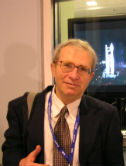| Abstract: |
Within the linear-quadratic model the biologically-effective dose (BED) - taken to represent treatments with an equal tumor control probability (TCP) - is commonly (and plausibly) calculated according to BED(D) = -log[S(D)]/α. We ask whether in the presence of cellular proliferation this claim is justified and examine, as a related question, the extent to which BED approximates an isoeffective dose (IED) defined, more sensibly, in terms of an equal long-term survival probability, rather than TCP. We derive, under the assumption that cellular birth and death rates are time homogeneous, exact equations for the isoeffective dose, IED. As well, we give a rigorous definition of effective long-term survival time, Teff. By using several sets of radiobiological parameters, we illustrate potential differences between BED and IED on the one hand and, on the other, between Teff calculated as suggested here or by an earlier recipe. In summary: (a) the equations currently in use for calculating the effective treatment time may underestimate the isoeffective dose and should be avoided. The same is the case for the tumor control probability (TCP), only more so; (b) for permanent implants BED may be a poor substitute for IED; (c) for a fractionated treatment schedule, interpreting the observed probability of cure in terms of a TCP formalism that refers to the end of the treatment (rather than Teff) may result in a miscalculation (underestimation) of the initial number of clonogens. © 2007 IOP Publishing Ltd. |



